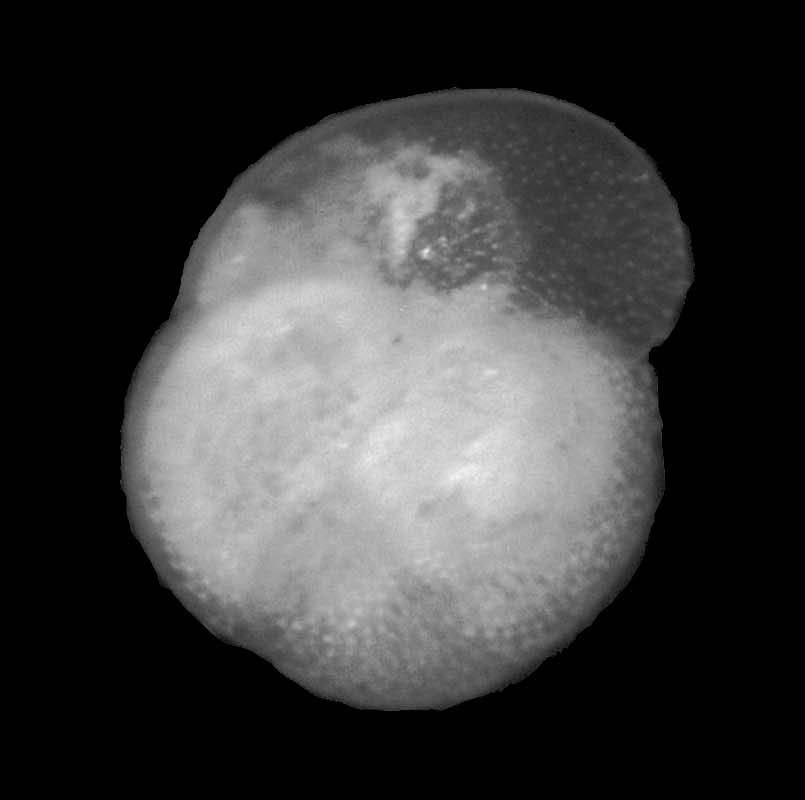
Dating Fossils
This blog is not about May-December relationships. Instead, it is about an activity that can show students how the scientists on our expedition use fossils they find in the cores to help determine the ages of the seamounts we are drilling.
The paleontologists onboard know a lot about fossils, including when the organisms that made the fossils lived on earth and went extinct. When they find fossils in a sediment layer, the fossils can tell them how old the layer is. These fossils are not dinosaur bones or mastodon teeth, but are usually the remains of microscopic marine organisms such as foraminifera. You can see some examples of forams in the USGS photo in the teaser image.
Foraminifera are one-celled organisms that make and live inside a tiny shell. There are a wide variety of species that have lived at various times and throughout Earth’s history and each species has a distinct shell. When the forams die, their shells can fossilize in the sediment on the ocean floor and, years later, be drilled up by the JOIDES Resolution. The paleontologists can identify the species the fossils came from and from this determine about what time the sediment layer was deposited, and from this an idea of how old the seamount is. Below is two views of one of the foram species found on this expedition.

In the activity below, students also find “fossils” in sediment samples that will help them determine the age of the sediments.
Supplies:
- Sieves
- Petri dishes
- Labels
- Sandwich bags
- Sand
- Two different colored beads (for convenience, I will use the colors blue and black in the description below) large enough not to fall through the sieve
- Containers to collect sand
Prep work:
Place a cup of sand each in 15 sandwich bags (or how many will work for your classroom). Label each bag with a site number (“Site 1” to “Site 15”) on a sticker Put labels on each sandwich bag so part of the sticky side is not attached. Put beads into each bag in different amounts (5 bags will have anywhere from 1 to 30 black beads [labeled Cores 1-5], 5 bags will have a mixture of black and blue beads [labeled Cores 6-10]), 5 bags will have anywhere from 1 to 30 blue beads [labeled Cores 11-15].
Procedures:
- Write on the board that blue beads represent a foraminifer species that lived 80-68 million years ago and black beads are a foraminifer species that lived 72-60 million years ago.
- Break the students into small groups so each group receives at least one bag of sand/beads. Tell them Core 1 is from the core closest to the surface and Core 15 is from the deepest core. Have the students sieve through sediment samples to separate all the beads (obviously, you will want them to do this over some sort of container that can collect the sand). Have them remove the beads from the sieve and place them in a petri dish. Then have them place the label from the bag on the petri dish so they remember which site it is from. Have them count the numbers of both color beads found in their sample and write the numbers on the label.
- Make a chart on the board that lists the site numbers in one column, the number of blue beads found in a second column and the number of black beads in a third column. Have the student groups report their findings and enter it on the chart. You may also want to have them graph the data.
- Ask the students to interpret their data. Which sites appear to be the oldest? (Answer: the ones with all blue beads). Which ones appear to be the youngest? (Answer: The ones with all black beads). If the site has both blue and black beads, when was that sediment probably deposited? (Answer: 72 to 68 million years ago when both black and blue beads were alive). Are there any samples where we can be completely sure when the beads were deposited? (Answer: Not exactly. A site that contains all black beads or all blue beads could still have been deposited during the period between 72 and 68 million years ago when the other color beads were also alive, because for some reason, none of the other color beads happened to collect and/or fossilize in that particular spot. Scientists would gather a lot more data from other sources before reaching any conclusions). Based on the data, which appears to be the youngest cores and which appear to be the oldest? (Answer: Sites 1-5 from the top appear to be the youngest and sites 11-15 near the bottom appear to be the oldest.)
Also, for a fun, online game about microfossils (that is also somewhat addictive, so don’t play it for the first time at work when you have a deadline) check out the Fossil Fun game on this website.